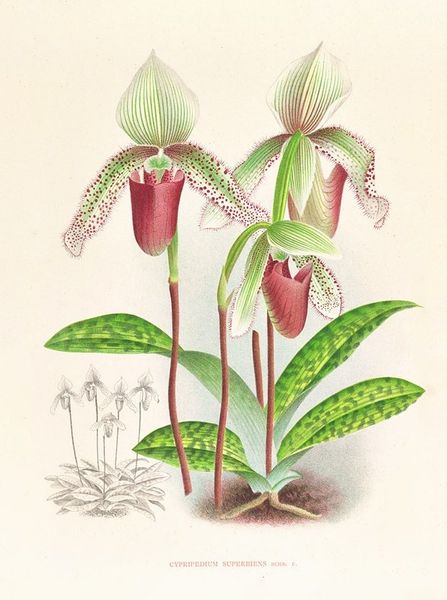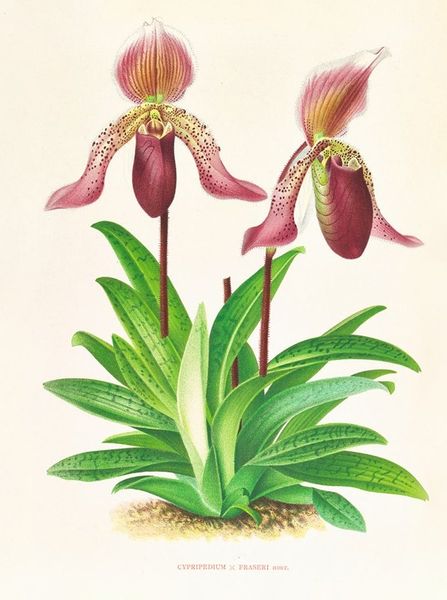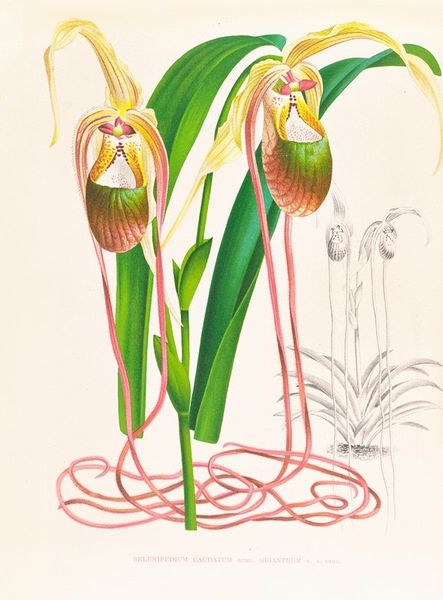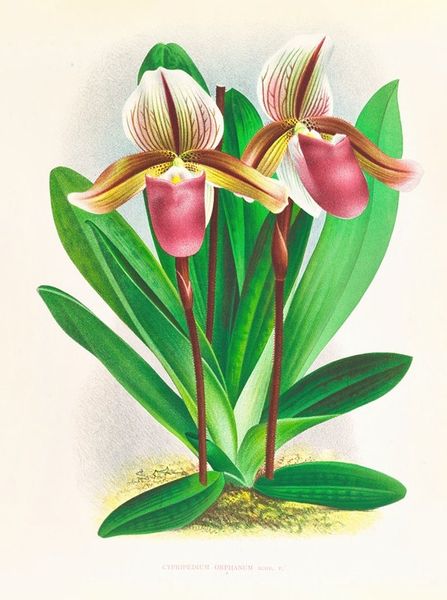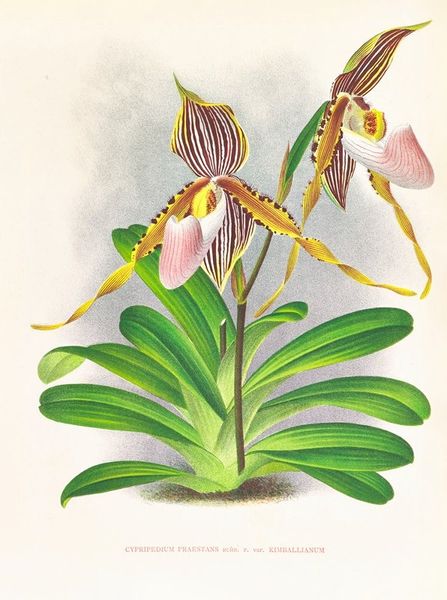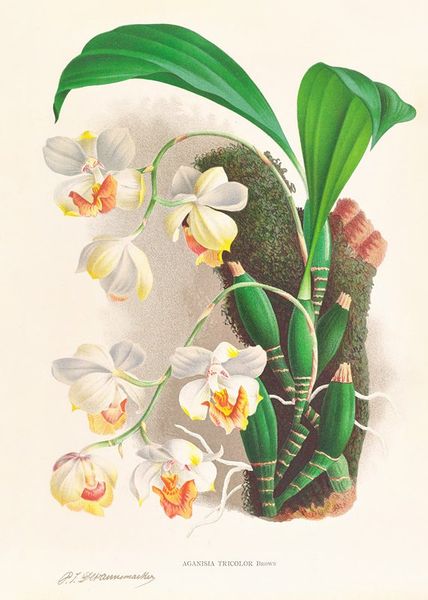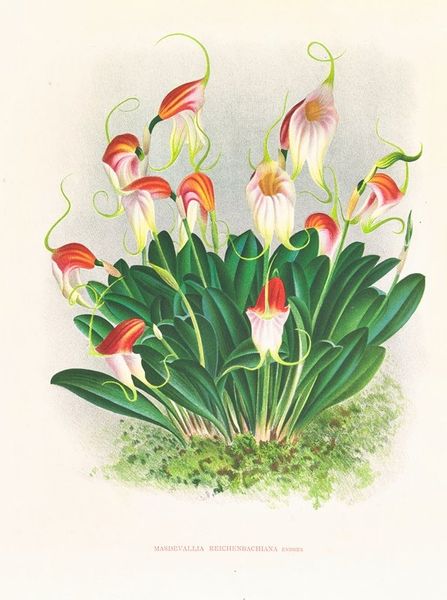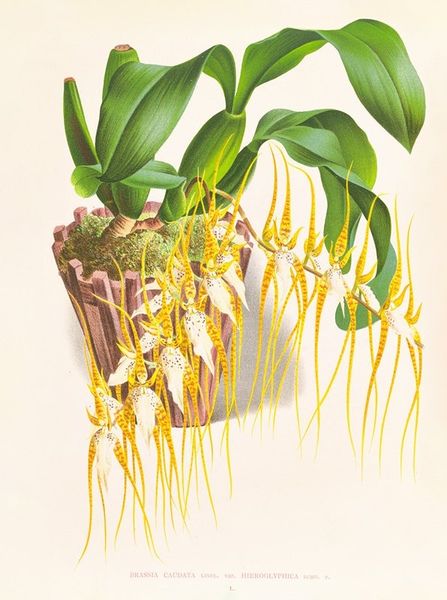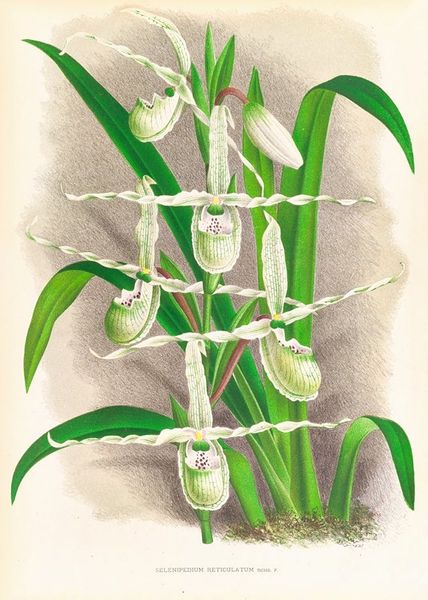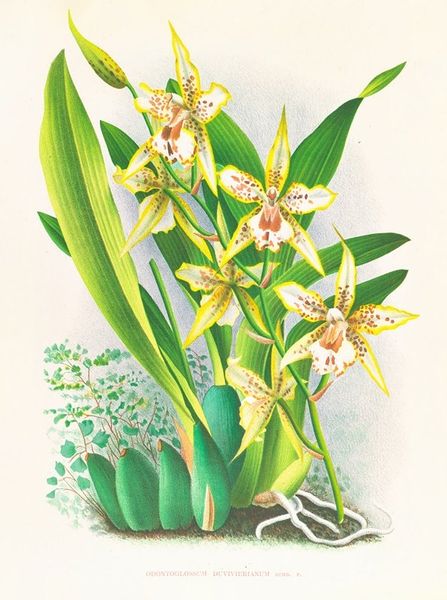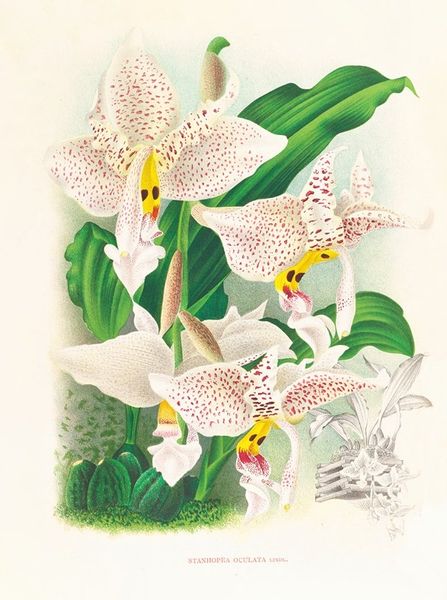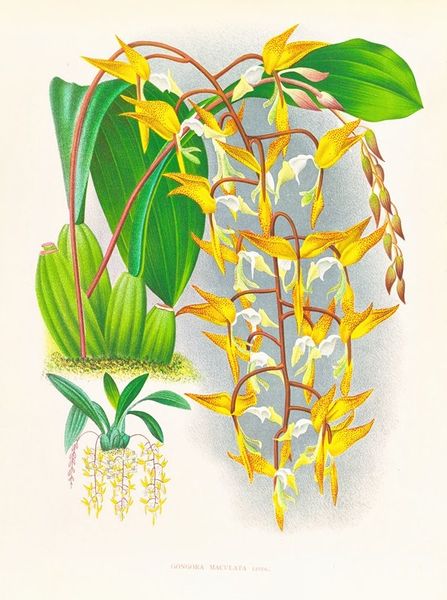
Copyright: Public Domain: Artvee
Editor: So, this is Jean Jules Linden’s "Masdevallia bella," dating roughly between 1885 and 1906. It's a watercolor botanical illustration, and what strikes me is the almost alien quality of the flowers – they're so strange and beautiful. What do you see when you look at it? Curator: I see layers of cultural encoding within this delicate depiction. The orchid, historically, has signified wealth and rarity, hasn’t it? But Linden's particular choice, the *Masdevallia bella*, is quite fascinating. The orchid resembles faces doesn't it? Even insects. What does the depiction of faces imply here? Editor: It's interesting that you see faces. The slightly sinister, pointy petals do resemble devilish features. Maybe it speaks to how even beauty can have a darker side? Curator: Exactly. Botanical art itself is deeply symbolic. In the Victorian era, flowers had entire languages associated with them, unspoken communication. Do you think this level of coded message accessible for later viewers of the botanical illustrations? Editor: I suppose much of that original language is lost, unless you’re an expert! It makes me wonder what future viewers will make of our symbols and artistic intentions. Curator: Precisely! Consider also how botanical illustrations served science but were also luxury items. Think of how they symbolized exploration and knowledge in a global context. They are maps of imperial desire but cloaked in aesthetic beauty, inviting many potential readings, even today. It opens up complex considerations of visual messaging that still resonate, wouldn't you agree? Editor: I hadn't considered the imperial aspect so explicitly. Seeing the intersection of science, art, and power in this light definitely gives the piece a whole new level of depth.
Comments
No comments
Be the first to comment and join the conversation on the ultimate creative platform.
